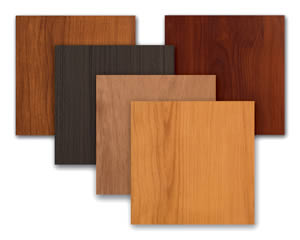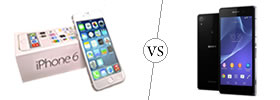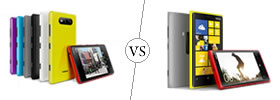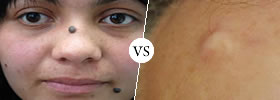Difference between Mica and Veneer
Key difference: Veneer refers to thin slices of wood that are practically peeled of the wood. The slices are usually less than 3 mm (1/8 inch) thick. The thin slices can then be glued together to create either laminated wood or plywood. Mica is actually the shortened name for Sunmica. Sunmica is a brand of laminates that is quite popular in India. Laminates are a multi-layer synthetic wood product. It is created of high-density fiber, melamine resin or wood particles.
 Veneer refers to thin slices of wood that are practically peeled of the wood. The slices are usually less than 3 mm (1/8 inch) thick. The thin slices can then be glued together to create either laminated wood or plywood. Plywood typically consists of three or more layers of veneer.
Veneer refers to thin slices of wood that are practically peeled of the wood. The slices are usually less than 3 mm (1/8 inch) thick. The thin slices can then be glued together to create either laminated wood or plywood. Plywood typically consists of three or more layers of veneer.
The veneer can also be glued onto core panels, such as wood, particle board or medium-density fiberboard. This gives the said wood, particle board or medium-density fiberboard, the look of the wood that the veneer was cut from. The veer covered wood, particle board or medium-density fiberboard can then be used to produce flat panels such as doors, tops and panels for cabinets, parquet floors and parts of furniture. Veneer beading is a thin layer of decorative edging placed around objects, such as jewelry boxes.
Veneer is usually obtained either by peeling the trunk of a tree or by slicing large rectangular blocks of wood known as flitches. There are three main types of veneer-making equipment used:
- Rotary lathe – in which the wood is turned against a very sharp blade and peeled off in one continuous or semi-continuous roll. This is mainly used for plywood.
- Slicing machine – in which the flitch or piece of log is raised and lowered against the blade and slices of the log are made. This type of veneer is also referred to as "crown cut" and looks like sawn pieces of wood.
- Half-round lathe - in which the log or piece of log can be turned and moved in such a way as to expose the most interesting parts of the grain.
There are many various types of veneer available in the market:
- Raw veneer – has no backing on it and can be used with either side facing up.
- Paper backed veneer – veneers that are backed with paper
- Phenolic backed veneer – less common. Mainly used for composite or manmade wood veneers.
- Laid up veneer – raw veneer joined together to make larger pieces.
- Reconstituted veneer – raw veneer cut and at times dyed. Usually made from fast-growing tropical species.
- Wood on Wood – decorative wood veneer face with a utility grade wood backer that is applied to the opposing direction to the face veneer. Also called 2-ply.
 Mica, on the other hand, traditionally refers to a group of sheet silicate minerals that have numerous different applications today, including in the creation of window panes and glass, as an insulator in various electric, and even in toothpaste. This is mainly due to the fact that mica is generally stable when exposed to electricity, light, moisture, and extreme temperatures. In toothpaste, mica acts as a mild abrasive that aids in polishing of the tooth surface. Ground mica is often also used in cosmetics industry to add the glittering finish in the products.
Mica, on the other hand, traditionally refers to a group of sheet silicate minerals that have numerous different applications today, including in the creation of window panes and glass, as an insulator in various electric, and even in toothpaste. This is mainly due to the fact that mica is generally stable when exposed to electricity, light, moisture, and extreme temperatures. In toothpaste, mica acts as a mild abrasive that aids in polishing of the tooth surface. Ground mica is often also used in cosmetics industry to add the glittering finish in the products.
However, when referring to mica in the same context as wood, mica is generally another name for laminates. Mica is actually the shortened name for Sunmica. Sunmica is a brand of laminates that is quite popular in India. It originally belonged to The Bombay Burmah Trading Corporation Limited, however it was eventually taken over by AICA Laminates India Pvt Ltd. Sunmica become such a popular brand, that the term ‘sunmica’ eventually became used to refer to laminates in general irrespective of the company that manufactures those said laminates.
As people started asking for sunmica instead of laminates, Sunmica’s competitors stared loosing business. In order to build up on this trend and get some business back, they started branding their laminates as ‘sun mica laminates’ (with a space) or just ‘mica laminates.’ Hence, many people today, in India especially, do not realize that sun mica, mica and laminates are essentially the same thing.
Laminates, specifically, are a multi-layer synthetic wood product. It is created of high-density fiber, melamine resin or wood particles. On top, the laminate has a photographic applique layer, which is in turn covered with a clear protective layer. The photographic applique layer is usually imprinted with various images that aim to imitate the appearance of real wood. Laminates are usually applied over plywood or fiberboard, so that they can duplicate the look of wood for a cheaper cost. In case of laminated wood, the wood veneers are pasted parallel to each other, as opposed to the right angles in plywood.
In addition to being cheaper, laminates are scratch-resistant, durable and easier to clean than traditional wood. It is easier to maintain, as the clear protective layer is resistant to pretty much everything except long exposure to water. This makes is longer lasting and well suited to be used in homes with kids and pets. Another advantage to laminates is that they are environmentally friendly as they use less wood to be manufactured, if any at all.
However, long time exposure to water or moisture may result in the laminate warping or ballooning. Moreover, the look of the laminate is set by the manufacturer, as opposed to wood that can be sanded and re-stained in any color of the stain available. Nonetheless, as the laminate is basically an image printed on it, the choice is pretty much limitless, and some manufacture may be willing to take custom orders. Still, laminates lack the visual warmth of wood.
While they are more durable than wood, laminates have a relatively shorter life-span as compared to traditional wood. The average life-span of laminate is between 10 to 20 years. It is also very hard to repair laminates, if it is damaged in any way or has run its course, the entire furniture may have to be replaced.
Image Courtesy: made-in-china.com, omnova.com









Add new comment